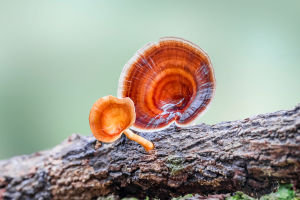Have you ever paused to notice the variety of flowers around you? From delicate daisies to vibrant orchids, flowering plants are everywhere, painting the world with color and scent.
But have you ever wondered how these plants came to dominate so many landscapes?
The story of flowering plants is a journey spanning over 100 million years, filled with innovation, survival strategies, and intricate relationships with animals. Understanding their evolutionary history not only reveals the resilience of nature but also helps us appreciate the ecosystems they support today.
Origins of Flowering Plants
Flowering plants, or angiosperms, first appeared during the early Cretaceous period, around 140 million years ago. Before their arrival, the Earth was dominated by gymnosperms like conifers and cycads, which relied mainly on wind for reproduction. Early angiosperms were small, herbaceous plants that produced simple flowers. These first flowers were likely modest in size and structure, designed to attract tiny insects rather than large pollinators.
The key innovation of angiosperms was the flower itself—a reproductive structure that combines male and female parts in a single unit. This allowed for more efficient fertilization compared to the separate cones of gymnosperms. Flowers also enabled plants to form specialized relationships with insects, birds, and other animals, greatly enhancing their chances of reproduction and spread.
Diversification and Adaptation
Once flowering plants emerged, their evolution accelerated rapidly. Several factors contributed to this diversification:
1. Pollination strategies – Flowers evolved colors, scents, and nectar to attract specific pollinators, including bees, butterflies, and birds. Specialized shapes, like tubular or bell-shaped flowers, ensured that only certain animals could access their nectar, promoting effective pollen transfer.
2. Seed dispersal innovations – Fruits developed to protect seeds and assist in dispersal. Some fruits became edible, encouraging animals to eat and transport seeds, while others used wind or water.
3. Environmental adaptation – Flowering plants adapted to diverse climates and soils. Some developed thick leaves to conserve water in dry areas, while others thrived in tropical rainforests with broad leaves for sunlight capture.
This adaptive flexibility allowed flowering plants to occupy nearly every terrestrial habitat, from deserts to wetlands. Today, they represent the most diverse group of plants on Earth, with over 300,000 known species.
Flowering Plants and Ecosystems
The evolution of flowers didn't just change plants—it transformed entire ecosystems. By forming relationships with pollinators, angiosperms created food networks that supported countless insect, bird, and mammal species. For instance, the rise of flowering plants coincided with the diversification of bees, which became critical pollinators for many crops we rely on today.
Flowers also influenced human evolution. Early humans relied on flowering plants for fruits, seeds, and edible leaves. Over time, humans began domesticating certain flowering plants for food, medicine, and decoration, further shaping both natural and cultivated landscapes.
Key Evolutionary Innovations
Some evolutionary milestones helped flowering plants dominate:
1. Double fertilization – A process unique to angiosperms that produces both a zygote and a nutrient-rich tissue for the seed, improving offspring survival.
2. Diverse flower structures – By evolving varied shapes and colors, flowers could attract multiple pollinators or specialize in one, enhancing reproductive success.
3. Rapid life cycles – Many flowering plants grow, reproduce, and die within a single season, allowing them to quickly colonize new habitats.
These innovations made flowering plants highly adaptable and efficient, allowing them to outcompete older plant groups over millions of years.
Continuing Evolution
Flowering plants continue to evolve today. Climate change, habitat loss, and interactions with pollinators influence their survival and adaptation. Hybridization, selective breeding, and genetic engineering have also accelerated changes, allowing humans to cultivate flowers with unique colors, scents, and resilience. Observing these ongoing changes reminds us that evolution is not a distant past event—it's happening around us constantly.
The history of flowering plants is a remarkable story of innovation, resilience, and interdependence. Next time you stop to admire a bloom, remember that it represents millions of years of evolutionary experimentation and adaptation. Every petal, every scent, and every fruit tells a tale of survival, cooperation with pollinators, and the relentless drive of life to flourish in a changing world.


